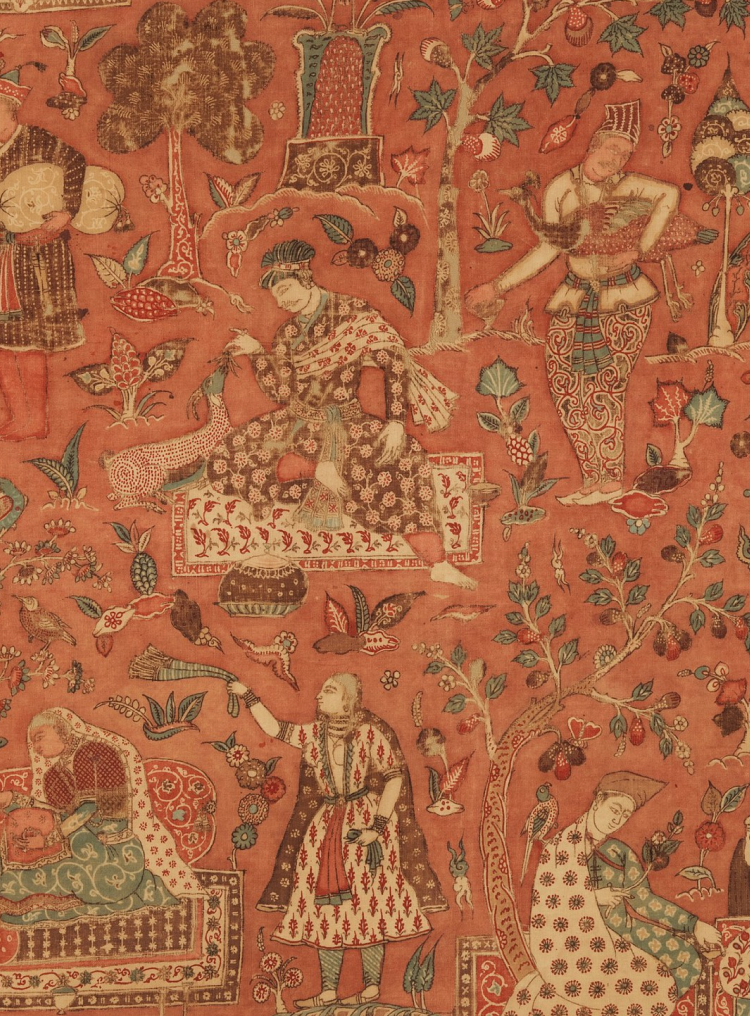

Timeline Learn More
Lorem ipsum dolor sit amet, consectetur adipiscing elit. Pellentesque efficitur massa et fringilla pretium. Sed sit amet ante sollicitudin, rhoncus nunc vitae, fringilla justo.
About The Project

The history of art in South Asia is vast and complex, and often overlaps with the histories of its surrounding regions. While information is available — dispersed across resources such as school curriculums, research papers and books — it is often nation-centric, and can be incomplete when studied in isolation. The Timeline of Art project is designed to track art historical events and developments occurring at the same time across the subcontinent. Planned as a constantly growing resource, it highlights the intricate ways in which the visual cultures of South Asia and its neighbouring regions are linked.
The Timeline of Art offers broad descriptions of significant moments in history, and covers —
- Vast geographies: Drawing visual and historical connections within and beyond the Indian subcontinent
- Extensive time spans: Tracing the evolution of South Asian art from the Stone Age to the present
- Diverse themes: Exploring key developments such as imperial expansions, international trade, inventions and discoveries, and their impact on art practice and patronage
The Interface

The Timeline interface lays out events in the chronology of South Asian history, describing how each has impacted people, politics and cultures across the region. In addition to contextual descriptions, every event is accompanied by a bibliography and illustrations, and the text also cross-references relevant Articles and Glossary terms in the MAP Academy’s Encyclopedia of Art. You can browse through the Timeline, select and navigate specific time periods via a dropdown menu, or refine your search results through an array of filters.
Research and Development

The Timeline of Art is designed to be a constantly growing project, with existing timelines receiving additional events, even as new, subject-specific timelines are being developed.
The first iteration of the Art in South Asia timeline, launched in 2024, focuses largely on the Indian subcontinent and will be updated to include more events not only from the wider South Asian region but also its neighbouring regions in the coming years. In this context, the terms ‘Indian subcontinent’ or ‘India’ are sometimes used interchangeably with ‘South Asia’, to include the many shared traditions, practices, cultures and histories across modern political borders.
Additionally, we have three other timelines that are in various stages of development:
- Art in the Indian Ocean: Offers alternative perspectives on imperialism and pre-industrial trade networks beginning with a dock built at Lothal in the third millennium BCE
- Photography in South Asia: Captures snapshots of the irreversible change in the region’s visual culture with the arrival of the camera and its growing accessibility
- Buddhist Art in Asia: Traces the journey of Buddhist thought and iconography to Central, Southeast and East Asia from the faith’s origin in the Indian subcontinent
As an ever-evolving project, the Timeline of Art will be updated regularly with more entries from South Asia and beyond. Our team is open to suggestions and comments from readers. You can get in touch with us through the feedback form at the end of every event description to submit ideas for new event entries or to improve existing ones.
Editorial Considerations

Following the overview provided by the Art in South Asia timeline, each subsequent timeline aims to address a thematic concern in the same format. Each timeline is based on a careful study of scholarly research, drawing from academic writing including journal articles, books and archives. Our research associates or commissioned experts write timeline entries, which are then edited, and reviewed internally as well as by external members of the MAP Academy’s Academic Review Panel (ARP).
Each timeline is curated to include significant events based on the following considerations:
- How pivotal an event is in the context of a timeline’s focus subject
- Its political, cultural and social significance in South Asian history
- Its place in the development of a particular art practice, movement, community or institution
- Whether it provides valuable background information for other significant events
- Whether it offers alternative insights or perspectives to mainstream historical narratives
In addition to tracing historical events, the Timeline also includes key discoveries in historiography, allowing audiences to reflect on how history is written. The Timeline of Art is also supported by metadata, which in addition to the standard parameters of periodisation and geography, includes a wide variety of political, cultural, material, technical and epistemological considerations.
Notes on Sensitivity

Throughout the history of art — in South Asia and beyond — depictions of nude human bodies, violence and death appear frequently, often as records of historical events. Maps depicting historical regions also often differ from contemporary maps. Such images — often subject to controversy or censorship — appear in the Timeline. They are used solely for educational purposes, in order to illustrate complex aspects of history. They are not intended to cause offence on any grounds, and do not endorse, promote or invalidate any specific political or territorial claims, or social, political or religious ideas.

